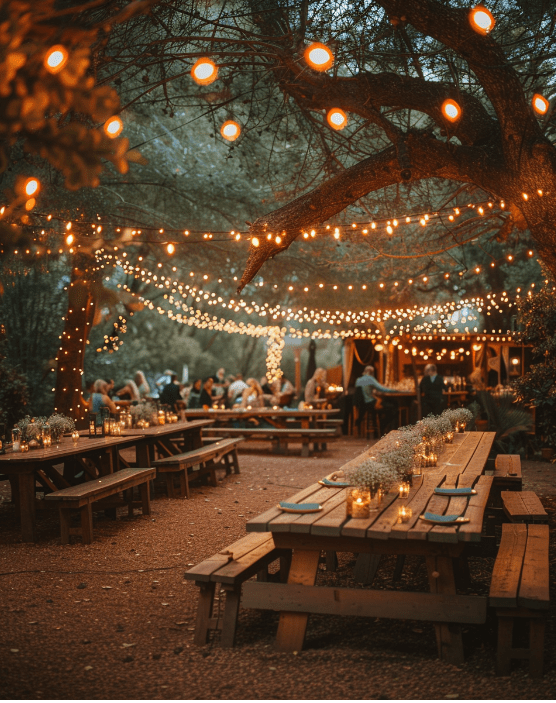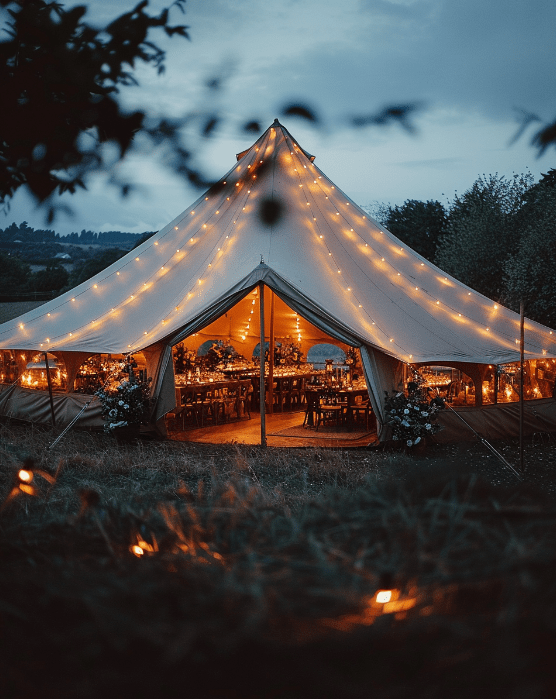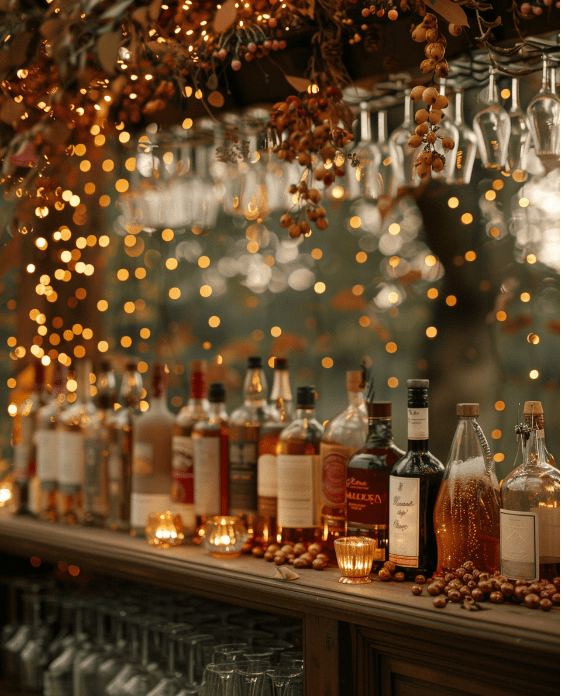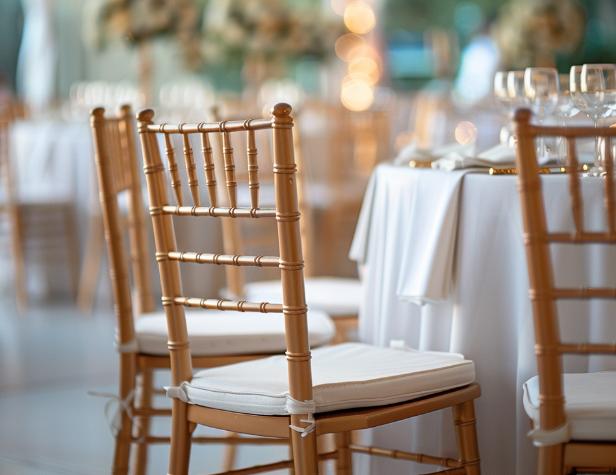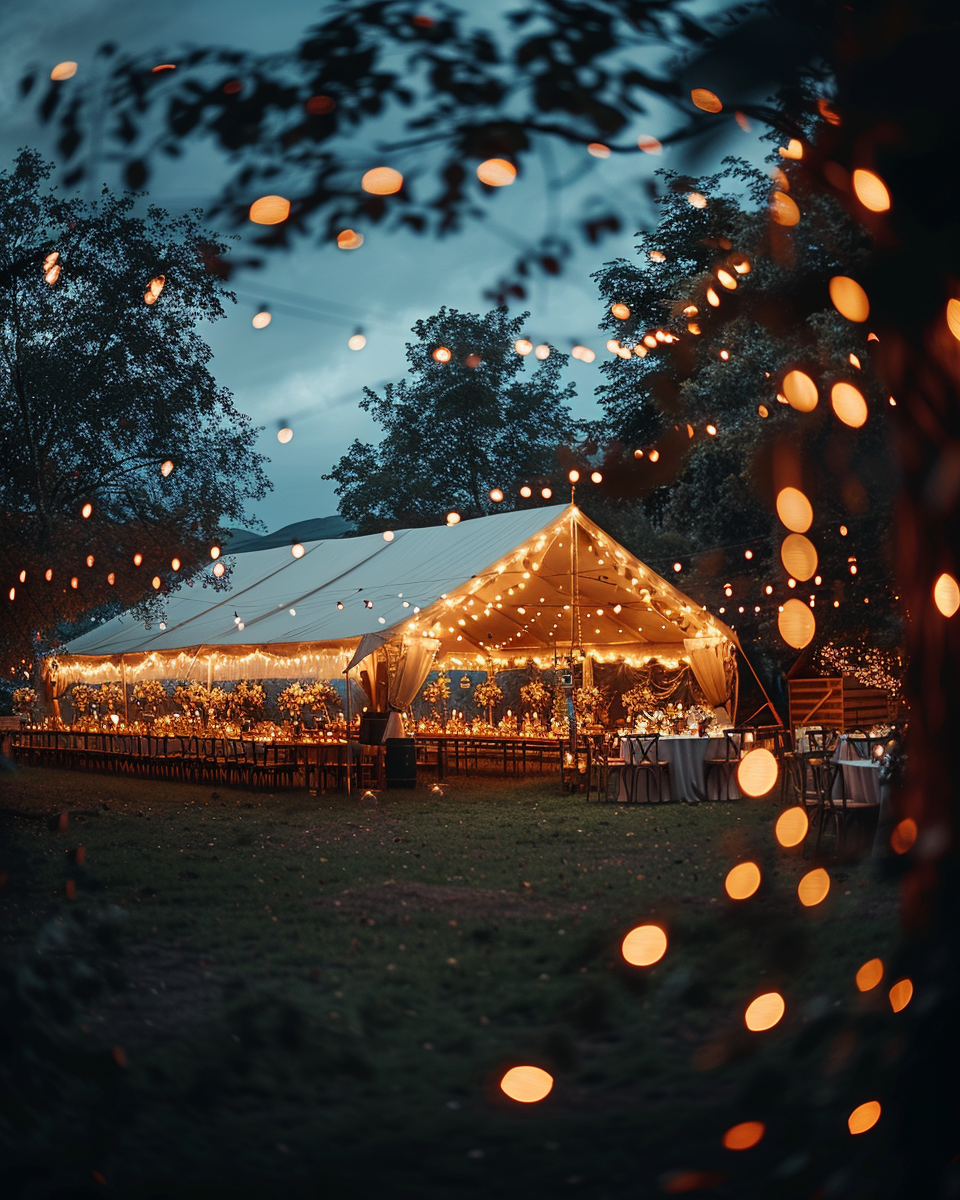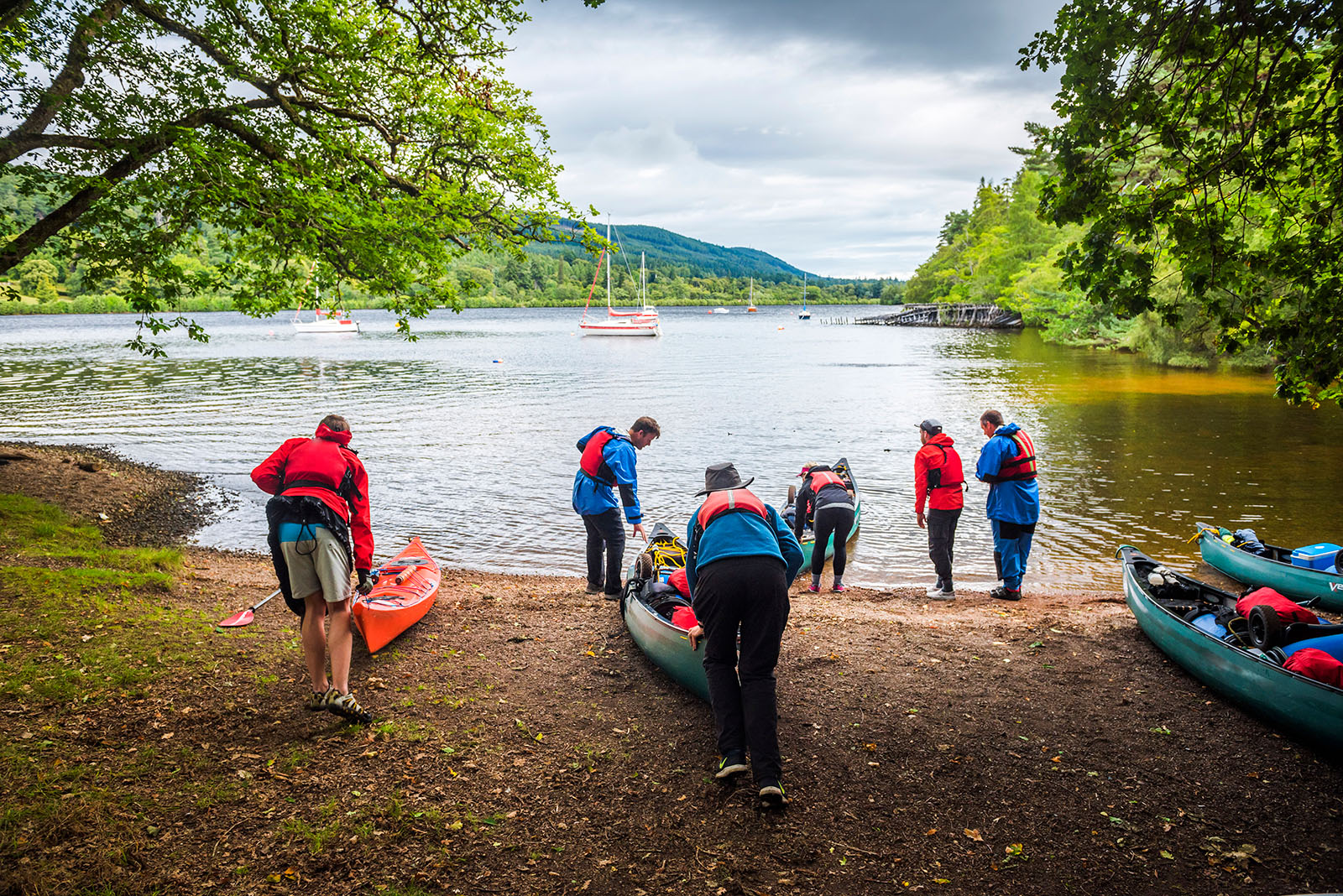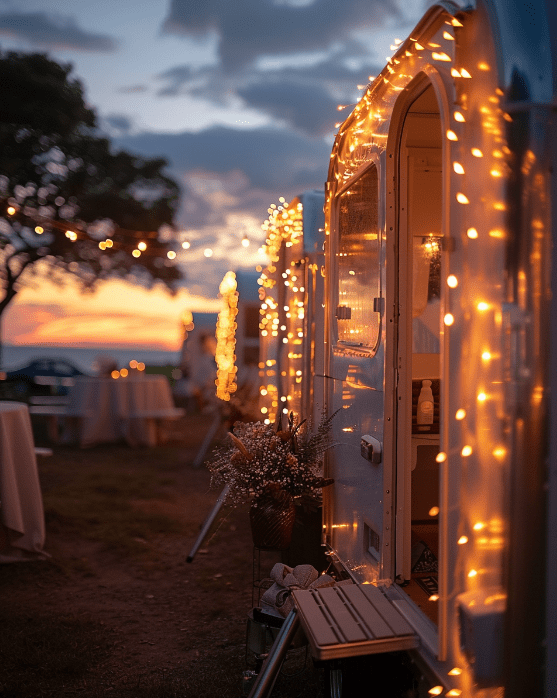
When aiming for a touch of glamour in your wedding mobile restrooms, attention to detail is key. From luxurious amenities to personalized decor, each element plays a part in creating an unforgettable experience for your guests. So, how can you ensure that every aspect of your restroom setup exudes sophistication and elegance? Let’s explore ten expert tips that will elevate your wedding restroom game and leave a lasting impression on everyone in attendance.
Key Takeaways
- Prioritize luxury restroom trailers with air conditioning and elegant finishes.
- Create an elegant interior with premium furnishings and personalized decor.
- Use high-quality floral decor and fragrances to enhance the ambiance.
- Offer premium toiletries, skincare products, and designer perfumes.
- Focus on guest comfort with stylish seating, entertainment options, and high-end amenities.
Luxury Restroom Trailer Selection
When choosing a luxury restroom trailer for your wedding, prioritize comfort, style, and functionality to ensure a glamorous experience for your guests. For outdoor wedding options, selecting a restroom trailer with luxurious features is essential. Look for trailers that offer air conditioning and heating to keep guests comfortable in any weather. Additionally, consider trailers with spacious interiors, elegant lighting, and upscale finishes to provide a touch of sophistication to your event.
Luxury restroom features such as marble countertops, designer sinks, and full-length mirrors can elevate the overall ambiance of your wedding. Opt for trailers equipped with sound systems so guests can enjoy music while freshening up. Some trailers even come with VIP sections, complete with lounge seating and extra amenities for added luxury.
When planning for outdoor weddings, it’s crucial to choose a restroom trailer that not only looks elegant but also functions efficiently. Ensure there are enough stalls and sinks to accommodate your guest count. Some luxury restroom trailers offer separate entrances for men and women, providing convenience and privacy for your attendees.
Elegant Interior Design
To curate an opulent atmosphere within your luxury restroom trailer, focus on crafting an elegant interior design that exudes sophistication and charm for your wedding guests.
Here are three key elements to help you achieve a luxurious ambiance and sophisticated design:
- Chic Color Palette: Opt for a color scheme that embodies elegance and refinement. Consider hues like soft ivory, champagne gold, or muted pastels to create a sense of luxury. These colors can be incorporated through the choice of wall coverings, linens, and decorative accents. Adding a pop of metallic tones like silver or rose gold can further elevate the space and add a touch of glamour.
- Premium Furnishings: Invest in high-quality furnishings that not only look elegant but also provide comfort to your guests. Plush seating options, ornate mirrors, and tasteful lighting fixtures can enhance the overall aesthetic of the restroom trailer. Incorporating elements like crystal knobs on cabinet doors or a crystal chandelier can elevate the space and create a sense of opulence.
- Attention to Detail: Pay attention to small details that can make a big impact on the overall design. Add fresh flowers in elegant vases, scented candles for a subtle fragrance, and luxurious hand towels for a touch of sophistication. Personalized touches like monogrammed towels or custom soaps can also add a unique and memorable aspect to the restroom experience.
Floral Decor and Fragrance
Imagine stepping into a mobile restroom adorned with elegant floral arrangements, instantly creating a luxurious ambiance.
The inviting scent diffusers strategically placed around the space will ensure a pleasant and refreshing experience for your guests.
Don’t forget to add a touch of charm with fresh flower bouquets, elevating the overall atmosphere of your glamorous wedding restroom.
Elegant Floral Arrangements
Adorn your glamorous mobile restroom with elegant floral arrangements to create a luxurious and inviting atmosphere for your wedding guests. Start by incorporating floral centerpiece arrangements and elegant table settings to elevate the overall look and feel of the restroom.
Here are three key items to consider:
- Luxurious Blooms: Choose high-quality flowers like roses, peonies, or orchids for your floral centerpiece arrangements to add a touch of elegance and sophistication.
- Coordinated Color Scheme: Select flowers that complement your wedding color palette to ensure a cohesive and visually appealing design.
- Fragrant Additions: Incorporate scented flowers like jasmine or lavender to not only enhance the aesthetics but also to infuse a pleasant fragrance in the restroom.
Inviting Scent Diffusers
Enhance the luxurious ambiance of your glamorous mobile restroom by incorporating inviting scent diffusers that blend floral decor with fragrant notes, elevating the sensory experience for your wedding guests.
Create an aromatic ambiance that caters to different scent preferences, offering a range of options from fresh and floral to citrusy and exotic. These scent diffusers not only add to the overall fragrant atmosphere but also contribute to the scented elegance of the restroom setup.
Consider using essential oils or high-quality diffuser blends to ensure a long-lasting and pleasant fragrance throughout the event. By combining floral decor with carefully selected scents, you can transform your mobile restroom into a serene oasis that leaves a lasting impression on your guests.
Fresh Flower Bouquets
Incorporate fresh flower bouquets into your glamorous mobile restroom to infuse a delightful blend of floral decor and natural fragrance, elevating the ambiance for your wedding guests.
- Floral Centerpiece Arrangements: Choose from a variety of floral centerpiece arrangements to add a pop of color and elegance to your restroom setting. Consider customization options to match your wedding theme perfectly.
- Scented Candle Options: Complement the floral scents with luxurious fragrances from scented candles placed strategically around the restroom. Opt for candles that enhance the overall ambiance and create a relaxing atmosphere for your guests.
- Fresh Flower Bouquets: Incorporate fresh flower bouquets not only as decor but also as a source of natural fragrance, bringing a touch of the outdoors inside your mobile restroom.
Premium Toiletries and Amenities
Treat your guests to a touch of luxury with premium toiletries and amenities in your mobile restrooms.
From scented hand soaps to plush hand towels, every detail adds to the elegant restroom decor.
Elevate the guest experience by offering personalized touches that make them feel pampered and special on your big day.
Luxury Toiletry Options
Indulge your guests with a selection of exquisite premium toiletries and amenities in your glamorous mobile restroom setup at your wedding. Here are three luxurious options to elevate their experience:
- Lavish fragrance options: Offer a range of high-end hand creams infused with captivating scents to pamper your guests and leave their hands feeling soft and beautifully fragranced.
- Deluxe skincare products: Provide deluxe skincare products that guests can use to freshen up and rejuvenate their skin, ensuring they feel refreshed and revitalized throughout the event.
- Designer perfume options: Impress your guests with a selection of designer perfumes they can spritz on for a touch of luxury, leaving them feeling sophisticated and elegant throughout your special day.
Elegant Restroom Decor
Enhance the ambiance of your glamorous mobile restroom at your wedding by adorning it with elegant decor that complements the premium toiletries and amenities provided for your guests’ comfort and luxury.
Consider glamorous mirror placements to add a touch of sophistication and create the illusion of a larger space. Elegant lighting effects can set the mood and highlight the luxurious details.
Incorporating sophisticated floral arrangements can bring a fresh and inviting feel to the restroom. Personalized signage options can add a unique touch, guiding guests to different amenities or simply adding a personalized message.
Personalized Guest Experience
Transform your guests’ restroom experience into a luxurious retreat with a selection of premium toiletries and amenities tailored to pamper and impress. Personalized seating arrangements, guest entertainment options, customized menu offerings, and VIP treatment packages will elevate the overall guest experience at your wedding.
- Personalized Seating Arrangements: Provide comfortable and stylish seating options for guests to relax and freshen up in luxury.
- Guest Entertainment Options: Consider adding entertainment features such as music or interactive displays to keep guests engaged while they freshen up.
- Customized Menu Offerings: Offer a selection of high-end toiletries and amenities that cater to your guests’ preferences, ensuring they feel pampered and cared for throughout the event.
Customized Signage and Lighting
Adding customized signage and lighting to your mobile restroom setup can elevate the ambiance and create a personalized touch for your wedding guests. Start by crafting signs that match your wedding theme, directing guests to the restroom area with style. Consider personalized signs with elegant calligraphy or cute illustrations to add a special flair.
Lighting plays a crucial role in setting the mood. String lights or lanterns can create a warm and inviting atmosphere around the restroom area, making it feel more like an extension of your wedding venue.
For a cohesive look, coordinate the signage and lighting with your customized seating arrangements. Imagine guiding guests to beautifully lit restrooms through a path lined with matching signs and seating that complements the overall aesthetic. Furthermore, don’t forget about the power of music. Select ambient tracks that blend seamlessly with the sounds of nature, enhancing the overall experience.
When it comes to signage, keep it informative yet stylish. Include directions, restroom labels, and any quirky messages that resonate with your personalities. As for lighting, soft and warm tones work best to create a welcoming and intimate space. By paying attention to these details, you can transform your mobile restroom setup into a glamorous and personalized oasis for your wedding guests.
Stylish Vanity Area Setup
When setting up your stylish vanity area, consider the placement of mirrors to create an illusion of space and elegance.
Selecting the right lighting effects can enhance the ambiance and provide flattering illumination.
Incorporating decorative organizers can keep essentials within reach while adding a touch of sophistication to your restroom setup.
Mirror Placement Options
For a chic and elegant touch in your stylish vanity area setup, consider strategically placing mirrors to enhance the overall ambiance of your glamorous mobile restroom at weddings. Mirrors not only serve a functional purpose but can also add depth and sophistication to the space. Here are some creative mirror placement options to elevate your vanity area:
- Reflective Wall: Install a large mirror on one wall to create the illusion of a bigger space and reflect the decorative accents, amplifying the glamour.
- Cluster of Mirrors: Arrange a cluster of different-sized mirrors on a side wall to add a dynamic visual element and provide various angles for guests to admire themselves.
- Mirrored Vanity Table: Place a stylish vanity table with an elegant mirror as a focal point, enhancing the overall luxurious feel of the area.
Lighting Effects Selection
Illuminate your stylish vanity area setup with carefully selected lighting effects to enhance the ambiance and elevate the glamour of your mobile restroom at weddings.
When it comes to creating the perfect ambient ambiance, consider using a mix of illumination options. Soft LED strip lights around the mirror can provide a flattering glow for makeup touch-ups and hair styling. Opt for elegant sconces or pendant lights to add sophistication to the space. Dimmable lighting fixtures are ideal for adjusting brightness levels to suit different needs throughout the day or evening events.
Don’t forget to place a chic table lamp or a decorative light near the vanity for a cozy and inviting atmosphere. These lighting choices won’t only illuminate but also transform your mobile restroom into a luxurious retreat for guests.
Decorative Organizer Ideas
Enhance the elegance of your stylish vanity area setup in the mobile restroom at weddings with creative decorative organizer ideas. To achieve a glamorous look, consider the following:
- Decorative Storage Baskets: Opt for chic baskets to store extra towels, toiletries, and other essentials. Wicker or metallic baskets can add a touch of sophistication to your vanity area.
- Elegant Tray Displays: Use a stylish tray to arrange perfume bottles, hand lotions, and other beauty products neatly. This not only keeps things organized but also adds a luxurious feel to the space.
- Mirror with Ornate Frame: A statement mirror with an ornate frame can serve as a functional and stylish accent in your vanity area. It not only provides a practical purpose but also elevates the overall aesthetic.
Guest Comfort Considerations
Ensure your guests feel pampered and at ease by incorporating plush seating and elegant decor in the mobile restroom area. For seating arrangements, consider adding comfortable chairs or benches where guests can relax while they wait. Accessibility options such as handrails and ramps should also be available for those who need them, ensuring that everyone can easily access the facilities.
Temperature control is essential for creating a comfortable environment. Make sure the mobile restroom is equipped with proper ventilation and heating or cooling systems to maintain a pleasant temperature regardless of the weather outside. Additionally, consider playing a soothing music playlist in the background to enhance the overall ambiance and help guests feel more at ease.
To elevate the guest experience, pay attention to the decor in the mobile restroom area. Consider adding elegant touches such as fresh flowers, scented candles, or stylish mirrors to create a luxurious atmosphere. Soft, ambient lighting can also contribute to a more relaxing and glamorous setting.
Seamless Maintenance Plan
Creating a seamless maintenance plan for the mobile restroom ensures the facilities remain pristine and functional throughout the event. To achieve this, consider the following key elements:
- Cleaning Schedule and Staff Training: Develop a detailed cleaning schedule that outlines tasks to be completed at regular intervals during the event. Assign specific duties to staff members and ensure they’re well-trained in proper cleaning techniques and product usage. Regular checks should be scheduled to maintain cleanliness and address any issues promptly.
- Waste Disposal: Efficient waste disposal is crucial for the smooth operation of the mobile restroom. Have a designated area for waste disposal, and ensure that it’s regularly emptied and sanitized to prevent odors and overflow. Consider having separate bins for recyclables to promote sustainability.
- Emergency Supplies: Prepare for unforeseen circumstances by stocking the mobile restroom with essential emergency supplies. Items such as extra toilet paper, hand sanitizer, air fresheners, and basic first aid kits can make a significant difference in maintaining a comfortable and hygienic environment for guests.
Privacy Enhancements
To elevate the sense of privacy in your glamorous mobile restroom setup, consider incorporating strategic design elements that enhance the guest experience. Privacy partitions and soundproofing are essential components to ensure guests feel comfortable and secluded while using the facilities. By implementing sturdy partitions between each toilet and soundproofing materials within the walls, you can create a more intimate and private space for your guests.
In addition to physical enhancements, personalized touches and custom signage can further enhance the privacy of your mobile restrooms. Consider adding elegant signs with instructions or messages that match your wedding theme to guide guests discreetly. Personalized touches such as monogrammed towels, decorative accents, or pleasant scents can also elevate the overall ambiance and make guests feel pampered.
When designing the layout of your mobile restrooms, think about the flow of traffic and how guests will move through the space. Placing privacy partitions strategically and ensuring there’s ample space for guests to move comfortably can enhance their overall experience. By paying attention to these details and incorporating personalized elements, you can create a glamorous mobile restroom setup that prioritizes privacy and enhances the luxury of your wedding day.
VIP Service Experience
For an unparalleled VIP service experience at your glamorous mobile restroom setup, consider incorporating luxurious amenities and personalized touches that cater to your guests’ every need. To create a truly memorable experience, focus on VIP service training and guest experience enhancements. Here are three key elements to elevate your restroom setup to the next level:
- VIP Service Training: Invest in training your restroom attendants to provide top-notch VIP service. They should be attentive, polite, and proactive in meeting guests’ needs. From offering warm towels to providing luxury toiletries, well-trained attendants can make a significant difference in the overall guest experience.
- Luxury Restroom Upgrades: Upgrade your restroom facilities with luxurious amenities such as scented candles, elegant hand soaps, fresh flowers, and plush hand towels. Consider installing full-length mirrors, vanity stations, and comfortable seating to add a touch of sophistication to the space. These upgrades will ensure that your guests feel pampered and special throughout the event.
- Elegant Event Planning: Coordinate the restroom setup with the overall event theme to maintain a sense of cohesion and luxury. Pay attention to details such as décor, lighting, and signage to create a seamless transition from the main event to the restroom area. By integrating the restroom design with the event aesthetics, you can offer a VIP service experience that leaves a lasting impression on your guests.
Frequently Asked Questions
Can Mobile Restrooms Be Customized to Match the Wedding Theme?
Yes, mobile restrooms can be customized to match your wedding theme.
Customized decorations and theme coordination are key to creating a cohesive and glamorous atmosphere.
From elegant floral arrangements to matching color schemes, you can elevate your mobile restroom experience to fit seamlessly with the rest of your wedding decor.
Are There Options for Gender-Neutral Restroom Signage?
When it comes to restroom decor, you have plenty of signage options to choose from. Gender-neutral restroom signage is a great way to promote inclusivity at your event. Consider elegant designs that blend seamlessly with your wedding theme.
Signs with creative symbols or phrases can add a touch of charm while ensuring that all guests feel comfortable and welcome. Be sure to explore different styles to find the perfect match for your glamorous mobile restrooms.
What Measures Are in Place for Eco-Friendly Practices?
To ensure eco-friendly practices at the event, sustainable materials like bamboo and recycled paper are used for the restroom decor. Composting toilets are utilized to reduce waste.
Water conservation is a top priority with low-flow faucets and toilets. Solar power is harnessed to provide energy for lighting and ventilation.
These measures not only contribute to environmental sustainability but also add a touch of elegance to the mobile restroom experience at weddings.
Can the Restroom Trailers Accommodate Guests With Disabilities?
Yes, the restroom trailers can accommodate guests with disabilities. Accessible accommodations are a priority, ensuring inclusive design for all attendees.
Ramps, spacious interiors, grab bars, and other features are in place to cater to individuals with varying needs. From easy access to proper signage, every detail is considered to provide a welcoming and comfortable experience for all guests, including those with disabilities.
How Is the Cleanliness and Hygiene of the Restrooms Maintained Throughout the Event?
You can rest assured that the cleanliness and hygiene of the restrooms are top-notch throughout the event. Rigorous cleaning protocols are in place to ensure spotless facilities.
Attendants regularly replenish sanitation supplies and monitor cleanliness levels. From the start to the end of your special day, maintaining a glamorous and sanitary restroom environment is a top priority.
Final Thoughts
As you say ‘I do’ in a stunning setting, ensure your guests experience luxury in every detail, even in the restroom. From marble countertops to personalized signage, create a glamorous oasis that leaves a lasting impression.
By prioritizing comfort, style, and functionality, you can elevate your wedding with a touch of sophistication and elegance. So go ahead, pamper your guests with a restroom experience they won’t forget, because every aspect of your special day should sparkle.

